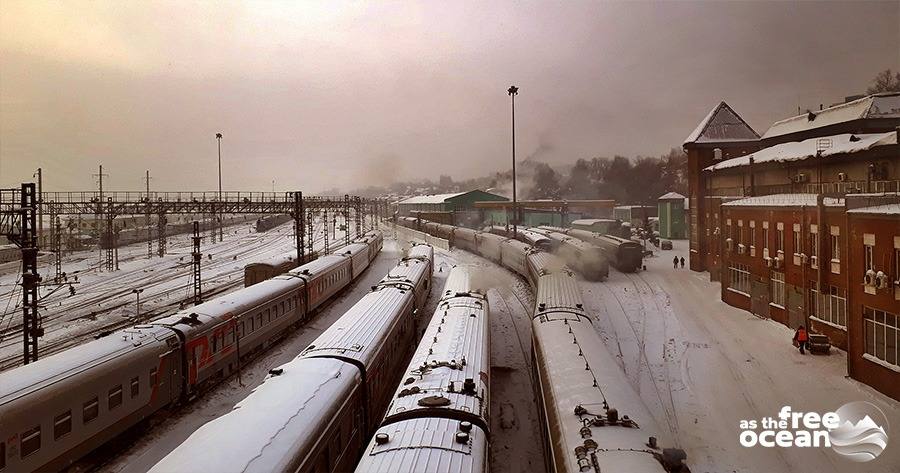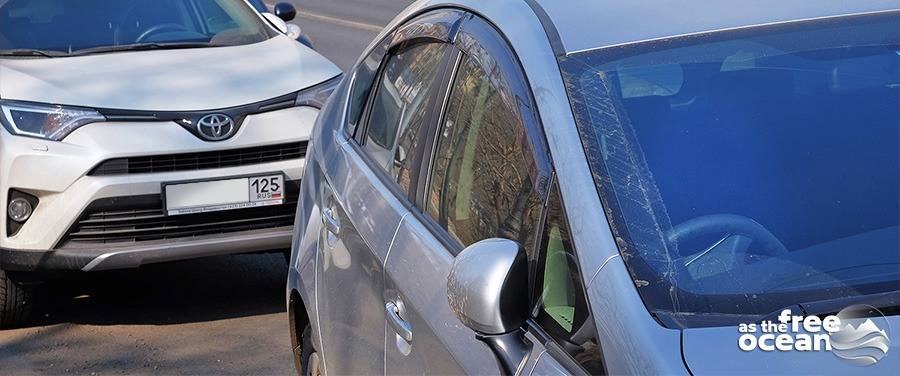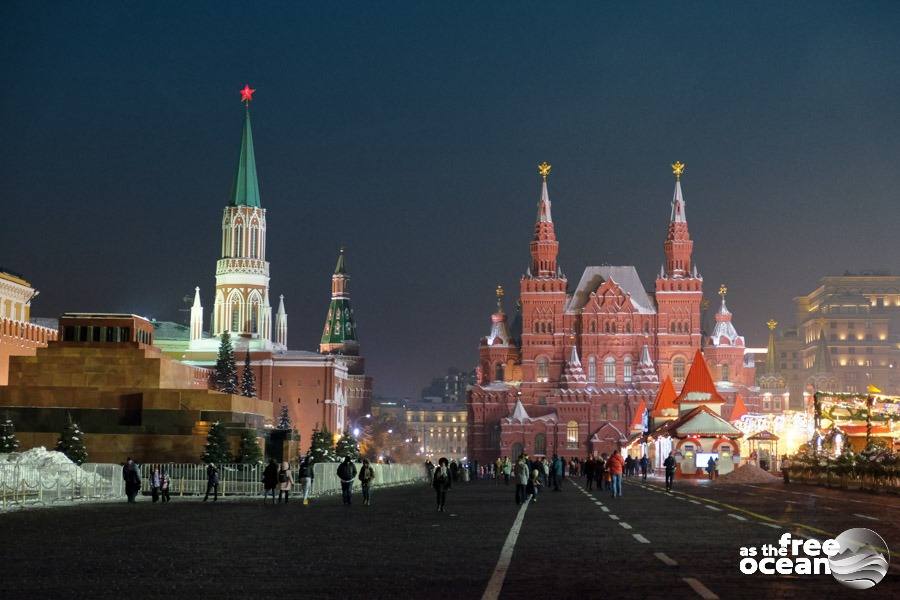Trains are somehow magical. They fit so well in some of the most beautiful stories. Or at least that’s how I always used to perceive them. Some of the most enchanting journeys in the world are done by train and some trains go where other transportation methods are not offered a chance.
After a short stay in the Russian capital, we started our big adventure on board the Trans-Siberian line, a 9.289 kilometers long network of railways that connects Moscow with the Russian Far East and probably the best option to choose when it comes to crossing a wilderness of snow and ice-cold temperatures like we did.

The Trans-Siberian journey begins
Our journey with the Trans-Siberian started on the 17th of March, late in the night. Feeling full of excitement and curiosity for how our trip would feel like, we waited patiently inside a coffee place at the station when the time table displayed the arrival time of the train that would bring us to Irkutsk, in the heart of Russia. The train happened to be full of friendly people that didn’t speak any English, or just a few words, but with whom we were still able to communicate and share at least a bit of our story.
It felt somehow hard to be trapped in a train for almost 4 days, but we enjoyed the warm temperature, the hot tea and the instant noodles that could be prepared right in our tiny cabin. We remembered how small our cabin onboard the cruise ship was and were laughing how small it became now.

There are a few things worth mentioning about the ride onboard the Trans-Siberian.
- Every carriage has two responsible persons, called Provodnik (male) or Provodnitsa (female). They provide passengers with bed linen, answer questions if there are any, provide food and sweets or souvenirs on request, keep the carriage clean and they even wake you up before the arrival at the destination point.
- There is always hot water available, so bringing tea, instant coffee or instant food with you is a good idea.
- They have a restaurant. We cannot say much about prices and the quality of the food because we weren’t tempted to try it, as we have bought all the necessary things before departure. Still, in the second part of our trip, from Irkutsk to Vladivostok, we were offered a meal which was quite good.
- Hygiene might be considered a problem, especially if the trip is longer than a day. There is no shower available, only a small toilet where you can use a small towel provided by the Provodnik to clean yourself.
- It is safe to travel with. The Provodnik always makes sure that everyone boarding the train has a ticket and that everyone respects the other passengers.
- It is fun. The landscapes are amazing and the experience itself is entertaining. For us it really felt like a trip to remember.
After our stay at Baikal Lake we boarded the train again. The trip to the end of the line lasted only three days and we had a bit more comfort because the train was newer and standards were higher than in the first one that brought us to Irkutsk. It was early in the morning and the first hours were probably the most entertaining of the whole trip. The part from Irkutsk to Ulan-Ude goes around the Baikal, offering amazing sceneries.
At the end of our trip we arrived in Vladivostok, the largest Russian port on the Pacific Ocean. The city offered a cold and grey landscape when we arrived, but the afternoon brought a blue sky and a bit of sun which made our short stay in the city feel pleasant.
The Trans-Siberian has been just the start of a long journey. It brought us far away from home and much farther we will continue going from here. A few pictures should help you get an idea of how it felt traveling across Russia by train.
Would you like to see some more pictures of Russia? Click here.



























